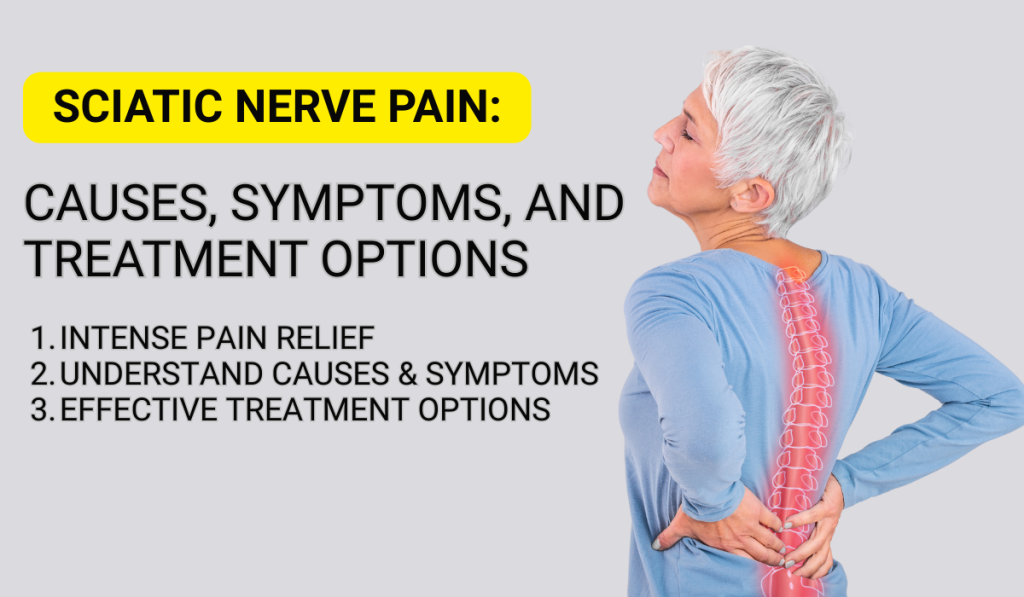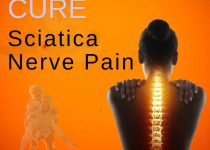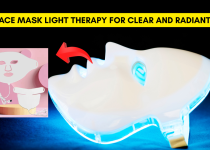Sciatic Nerve Lower Back Pain: Effective Solutions and the Role of thyrovanz

Sciatic nerve lower back pain is a prevalent condition that affects millions of people worldwide. This pain, often sharp and debilitating, arises from the sciatic nerve, which is the longest nerve in the human body. Understanding the nuances of this condition—its causes, symptoms, and treatment options—is essential for effective management. In this comprehensive guide, we will delve into sciatic nerve lower back pain and explore how a product like thyrovanz can provide relief and enhance recovery.
Thank you for reading this post, don't forget to subscribe!What is Sciatica?
Sciatica refers to pain that originates in the lower back and radiates along the sciatic nerve, typically down one leg. The sciatic nerve starts in the lower spine and extends through the hips and buttocks. Sciatica is often a symptom of an underlying medical issue rather than a standalone diagnosis.
Key Symptoms of Sciatic Nerve Lower Back Pain
Understanding the symptoms of sciatic nerve lower back pain is essential for early detection and effective management. Here’s a more detailed breakdown of the key symptoms associated with this condition:
1. Lower Back Pain
The initial symptom often experienced is a dull ache or discomfort in the lower back. This pain can vary in intensity, starting mild but often intensifying with movement or prolonged sitting. Individuals may describe the pain as persistent or throbbing, which can hinder daily activities like bending, lifting, or even standing. The discomfort may also become sharper during specific actions, such as standing up from a seated position or transitioning from sitting to standing.
2. Radiating Pain
One of the hallmark features of sciatica is radiating pain that extends from the lower back through the buttocks and down one leg. This pain can manifest in different ways:
- Shooting Pain: A sharp, sudden pain that feels as though it’s traveling along the nerve pathway, often triggered by movement.
- Burning Sensation: Some individuals describe a burning feeling that can accompany the shooting pain, making it difficult to find a comfortable position.
- Variability: The pain may fluctuate, sometimes feeling intense and at other times dull and throbbing. It often occurs on one side of the body, aligning with the affected sciatic nerve.
3. Numbness and Tingling
Numbness and tingling, commonly referred to as a “pins-and-needles” sensation, are prevalent symptoms that can accompany sciatic nerve pain. This sensation may radiate from the lower back into the buttock and down the leg, sometimes extending to the foot. It can feel particularly bothersome and may result in:
- Difficulty Sensing Foot Placement: Individuals may struggle with balance or feel as if their foot is “asleep,” complicating walking or standing.
- Interference with Daily Activities: Numbness can affect basic activities such as driving, climbing stairs, or even walking, as it diminishes sensory feedback from the leg.
4. Muscle Weakness
Muscle weakness is another critical symptom of sciatic nerve lower back pain. Affected individuals might notice a decline in strength in the leg or foot on the affected side, which can manifest in various ways:
- Difficulty Lifting the Foot: Some people may find it hard to lift their foot, leading to dragging or stumbling while walking.
- Reduced Stability: Muscle weakness can compromise balance, increasing the risk of falls or injuries.
- Impact on Activities: Weakness may hinder the ability to perform simple tasks such as climbing stairs, squatting, or standing for extended periods.
5. Aggravation with Movement
Sciatic nerve pain often worsens with certain movements or activities, making it vital to recognize the triggers. Common scenarios where pain intensifies include:
- Sitting for Prolonged Periods: Staying seated for too long can exacerbate lower back pain and discomfort in the legs, often leading to increased numbness or tingling.
- Standing Up or Twisting: Transitioning from sitting to standing, especially with a twist of the torso, can trigger sharp pain or spasms in the lower back and legs.
- Bending or Lifting: Engaging in activities that require bending over or lifting objects, particularly if done incorrectly, can aggravate sciatic nerve pain and lead to further discomfort.
Common Causes of Sciatic Nerve Lower Back Pain
Understanding the root causes of sciatic nerve pain is vital for effective treatment and management. Here’s a closer look at some of the most common causes of sciatic nerve lower back pain:
1. Herniated Discs
A herniated disc occurs when the soft inner material of a spinal disc bulges out through a tear in the tougher exterior. This bulging material can compress nearby nerves, including the sciatic nerve. Key points about herniated discs include:
- Symptoms: A herniated disc can lead to sharp, radiating pain in the lower back, buttocks, and legs, often accompanied by numbness and weakness.
- Risk Factors: This condition is more common in individuals over 30 and those who engage in heavy lifting or twisting movements.
2. Spinal Stenosis
Spinal stenosis is a condition characterized by the narrowing of the spinal canal, which can lead to pressure on the spinal cord and nerves, including the sciatic nerve. This narrowing can occur due to:
- Arthritis: Age-related degeneration of spinal joints can cause bone spurs that contribute to stenosis.
- Symptoms: Individuals may experience pain, cramping, or numbness, particularly during activities like walking or standing for extended periods.
3. Degenerative Disc Disease
As individuals age, the spinal discs can undergo degenerative changes, losing hydration and elasticity, leading to decreased disc height and increased stress on surrounding nerves. Key aspects of degenerative disc disease include:
- Symptoms: This condition can result in chronic lower back pain, stiffness, and sciatica as the affected discs may irritate nearby nerves.
- Impact on Mobility: People with degenerative disc disease may find it challenging to engage in physical activities, as pain can worsen with movement.
4. Muscle Strain or Injury
Trauma to the lower back from accidents, falls, or sports injuries can lead to muscle strains, which may trigger sciatica. Factors to consider include:
- Symptoms: Muscle strain can result in localized pain and spasm in the lower back, which may radiate to the legs as the sciatic nerve becomes irritated.
- Recovery Time: Depending on the severity of the injury, recovery may require rest, physical therapy, or other interventions.
5. Skeletal Irregularities
Conditions such as scoliosis, characterized by an abnormal curvature of the spine, can increase the likelihood of developing sciatic nerve pain. Important points include:
- Impact on Alignment: Abnormal spinal alignment can lead to uneven pressure on the discs and nerves, contributing to pain and discomfort.
- Long-term Effects: Scoliosis may worsen over time, leading to increased risk of nerve compression and associated symptoms.
Conclusion
Diagnosis and Medical Evaluation
A proper diagnosis is essential for managing sciatic nerve lower back pain. Health professionals will typically perform:
- Physical Examination: Assessing posture, flexibility, and the location of pain.
- Imaging Tests: X-rays or MRIs may be ordered to identify herniated discs or other structural issues.
Effective Treatment Options for Sciatic Nerve Lower Back Pain
1. Medications
- Nonsteroidal Anti-Inflammatory Drugs (NSAIDs): Over-the-counter options like ibuprofen or naproxen help reduce inflammation and pain.
- Prescription Medications: In cases of severe pain, stronger prescription pain relievers, muscle relaxants, or corticosteroids may be recommended.
2. Physical Therapy
Physical therapy is a cornerstone of effective treatment for sciatic nerve pain. A trained physical therapist can develop a personalized exercise program focusing on:
- Stretching Exercises: Targeting the lower back and legs to relieve tension and pressure on the sciatic nerve.
- Strengthening Exercises: Focusing on core and back muscles to provide better support for the spine.
3. Chiropractic Care
Chiropractors employ spinal manipulation techniques to realign the spine, relieving pressure on the sciatic nerve. Many patients find that regular chiropractic adjustments can help alleviate symptoms and improve mobility.
4. Alternative Therapies
In addition to conventional treatments, various alternative therapies may help manage sciatic pain:
- Acupuncture: This ancient practice can provide pain relief by targeting specific points in the body.
- Massage Therapy: Therapeutic massage helps relax tight muscles and improve circulation.
5. Lifestyle Modifications
Making changes to your daily routine can significantly affect sciatic nerve pain management:
- Weight Management: Maintaining a healthy weight reduces strain on the lower back.
- Ergonomic Adjustments: Optimizing your workspace to promote good posture can prevent pain.
- Regular Exercise: Engaging in low-impact exercises like walking or swimming can help keep your back healthy.
6. Invasive Treatments
When conservative measures fail to provide relief, more invasive treatments may be considered:
- Epidural Steroid Injections: These injections reduce inflammation and pain in the affected area.
- Surgery: Surgical options, such as a microdiscectomy or laminectomy, may be necessary in severe cases.
How thyrovanz Helps Alleviate Sciatic Nerve Lower Back Pain
In the quest for effective pain management, thyrovanz has emerged as a popular product designed to offer relief for those suffering from sciatic nerve lower back pain. Here’s how thyrovanz can help:
1. Targeted Pressure Application
thyrovanz provides targeted pressure directly to the lower back and hips, areas commonly affected by sciatica. This focused pressure can alleviate discomfort and tension in the surrounding muscles, providing immediate relief.
2. Vibration Therapy
thyrovanz incorporates vibration therapy, which promotes blood circulation and relaxes tight muscles. Many users report significant reductions in pain levels and muscle spasms after using the device, allowing for improved mobility.
3. Convenience and Ease of Use
One of the main benefits of thyrovanz is its user-friendly design. Individuals can easily incorporate it into their daily routines, using it at home, work, or while relaxing. This accessibility makes it an excellent option for those seeking to manage their pain independently.
4. Complementary Treatment Tool
thyrovanz can enhance the effectiveness of other treatments, such as physical therapy or chiropractic care. By providing additional relief, it helps users get the most out of their overall treatment plan.
5. Positive User Testimonials
Numerous individuals who have utilized thyrovanz report substantial improvements in their sciatic nerve pain. User testimonials frequently highlight the device’s effectiveness in relieving discomfort and improving overall quality of life.
Conclusion
Sciatic nerve lower back pain is a common yet challenging condition that can significantly disrupt daily life. Understanding the causes and effective treatment options is essential for managing this pain. From medications and physical therapy to alternative treatments and lifestyle changes, individuals have various avenues to explore for relief.
Products like thyrovanz can serve as valuable tools in the pain management toolkit, providing targeted relief and enhancing recovery. If you are experiencing symptoms of sciatica, it’s crucial to consult a healthcare professional for a tailored treatment approach. With the right combination of therapies, finding relief from sciatic nerve pain is not only possible but achievable, allowing you to reclaim your quality of life.


